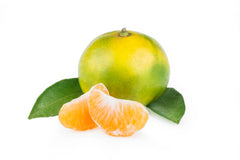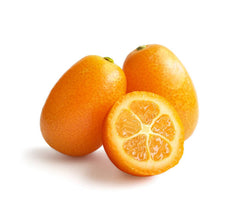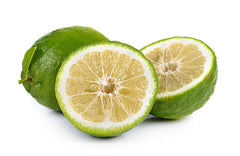What Does Bourbon Smell Like?
Black Friday Fragrance Deals
Click For Affordable Inspired Perfume Alternatives

Embark on a sensorial journey through the world of bourbon and uncover the rich and complex aromas that characterize this beloved spirit. Bourbon, a type of American whiskey with a distinctive production process and flavor profile, offers a symphony of scents that captivate the senses. Join us as we explore the question: What does bourbon smell like?
The Aroma of Bourbon: A Symphony of Richness
Bourbon, with its roots deeply embedded in American history, presents a captivating olfactory experience that reflects the craftsmanship and artistry of its production. Let's delve into the aromatic tapestry that defines the scent of bourbon.
1. Oak Elegance: Woody Warmth
As you approach a glass of bourbon, the first impression is often a warm embrace of oak. Bourbon gains its rich color and a significant part of its aroma from the charred oak barrels used in its aging process. The scent is reminiscent of a rustic and inviting oak cabin, offering a comforting warmth to the overall bouquet.
2. Sweet Symphony: Vanilla and Caramel Notes
Bourbon's sweetness unfolds with notes of vanilla and caramel. The interaction between the sugars in the charred oak barrels and the distilled corn-based mash creates a luscious sweetness that dances on the nose. Picture the aroma of creamy vanilla and rich caramel, evoking a sense of indulgence and decadence.
3. Spicy Intricacy: Cinnamon and Pepper Accents
The complexity of bourbon reveals itself with a subtle spiciness. Cinnamon and pepper notes add layers to the olfactory experience, providing a delightful contrast to the sweetness. The interplay between the warm spices and the sweetness creates a harmonious balance, akin to a well-spiced dessert.
4. Fruity Undertones: Dried Fruits and Citrus Zest
Bourbon surprises with hints of dried fruits, such as raisins or figs, adding a touch of fruity sophistication. Citrus zest may also make an appearance, contributing a refreshing brightness that complements the richness of the other aromas. This fruity undertone adds a nuanced dimension to the overall scent profile.
5. Earthy Nuances: Leather and Tobacco
In the depths of bourbon's aroma, you may encounter earthy and leathery nuances, reminiscent of a well-worn leather chair in a cozy study. Tobacco notes may also emerge, adding a subtle smokiness that enhances the overall complexity. These earthy undertones contribute to the mature and refined character of bourbon.
Factors Influencing the Scent of Bourbon
Much like calamansi fragrance oil, the aroma of bourbon is influenced by various factors in its production. Understanding these elements provides insight into the diverse and intricate scent profile of this iconic American spirit.
1. Barrel Influence: Charred Oak Magic
The type of oak barrels used and the degree of charring significantly impact the bourbon's aroma. The interaction between the spirit and the charred wood imparts distinctive woody and vanilla notes, shaping the character of the final product.
2. Mash Bill Composition: Corn, Rye, Barley, and More
The combination of grains in the mash bill, including corn, rye, barley, and sometimes wheat, plays a crucial role in determining the sweetness, spiciness, and overall flavor complexity of bourbon.
3. Aging Process: Time and Patience
The duration of aging in the barrels contributes to the depth and maturity of bourbon's aroma. Longer aging periods allow the spirit to absorb more flavors from the wood, resulting in a richer and more complex scent profile.
4. Distillation Techniques: Craftsmanship Matters
The distillation process, including the type of stills used and the distillation proof, influences the purity and concentration of aromatic compounds in bourbon.
5. Water Source: Terroir of Bourbon
The quality and characteristics of the water used in bourbon production can subtly influence the final aroma. The unique terroir of the water source adds a touch of regional identity to the spirit.
6. Batch Variations: Artisanal Touch
Small-batch and single-barrel bourbons often showcase variations in aroma due to their artisanal nature. Each batch carries the imprint of its unique production process, adding an element of unpredictability and excitement for enthusiasts.
7. Bottling Strength: Proof Matters
The bottling strength, or proof, of bourbon affects the volatility of its aromatic compounds. Higher proof bourbons may present a more intense and concentrated aroma, while lower proof options may offer a gentler olfactory experience.
What to Look for When Savoring Bourbon
When savoring bourbon, whether neat, on the rocks, or in a cocktail, consider these factors to fully appreciate its aromatic nuances:
1. Glassware Matters: Choose a tulip-shaped glass to concentrate the aromas and allow for a more immersive olfactory experience. Swirl the bourbon gently to release its scents.
2. Take Your Time: Allow the bourbon to breathe for a few minutes after pouring. Patience reveals the full spectrum of aromas as they evolve in the glass.
3. Nose First: Engage your sense of smell before taking a sip. Inhale slowly, identifying the various notes that contribute to the bourbon's aromatic profile.
4. Temperature Awareness: Note how the temperature of the bourbon influences its aroma. Warmer temperatures may accentuate certain scents, while cooler temperatures can temper the overall bouquet.
5. Consider Pairings: Experiment with food pairings to enhance or contrast with the bourbon's aromas. Rich desserts, aged cheeses, or even a piece of dark chocolate can complement the experience.
Where to Find Exceptional Bourbons
Discovering exceptional bourbons involves exploring a variety of sources, from specialized retailers to curated events. Here are some avenues to find high-quality and unique bourbons:
1. Specialized Liquor Stores: Visit well-established liquor stores with a focus on whiskey and bourbon. Knowledgeable staff can guide you to rare and premium selections.
2. Whiskey Distillery Tours: Plan a visit to whiskey distilleries or participate in virtual tours. Distilleries often offer exclusive releases and limited-edition bourbons to tour participants.
3. Whiskey Tasting Events: Attend whiskey tasting events or festivals where you can sample a diverse range of bourbons. These events provide an opportunity to explore different flavor profiles.
4. Online Whiskey Retailers: Reputable online platforms dedicated to whiskey and bourbon retail offer a convenient way to access a wide selection of bottles. Check reviews and ratings for insights into the quality of each bourbon.
5. Specialty Bars and Restaurants: Explore bars and restaurants with a curated selection of bourbons. Knowledgeable bartenders can recommend bourbons based on your flavor preferences.
6. Bourbon Subscription Services: Consider joining a bourbon subscription service that delivers curated selections to your doorstep. This allows you to explore new releases and limited editions regularly.
7. Whiskey Auctions: Participate in whiskey auctions, either online or in person, to discover rare and collectible bourbons. Be sure to research the provenance and authenticity of bottles up for auction.
In Conclusion: A Bourbon Odyssey
Bourbon, with its diverse and intricate aromatic palette, invites enthusiasts on a sensory journey filled with warmth, sweetness, spice, and complexity. Each bottle tells a unique story of craftsmanship, tradition, and the American spirit. So, the next time you raise a glass of bourbon, take a moment to savor the symphony of scents that unfold, transporting you to the heart of this iconic and cherished spirit. Cheers to the rich and aromatic world of bourbon!
Buy Perfumes - Best Online Retailers
Click For Affordable Inspired Perfume Alternatives
Click For The Best Niche Perfumes & Decants
Pheromone Perfumes - Confidence, Attraction & Appeal - Click For More
Home Fragrances & Candle Warmers - Click To Scent Up Your Spaces Today!


